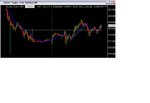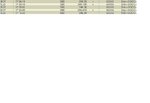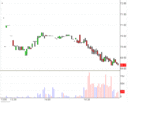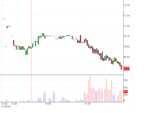Thanks for the imput, chump.
Obviously anything I say is merely my opinion, but is it based on years of experience and works for me and many others I have been in contact with.
There are many ways to trade and invest. This is only one of them.
I'm going to paste in the comments I made on JumpOff's Momentum thread, so anyone interested doesn't have to go searching for it.
"This might be a very promising thread, JO.
Let's hope we can have some intelligent exchange of thoughts without the usual degeneration and personal attack nonsense.
Yes, there is a certain self-righteous element which thinks momentum trading,(MT), is something to sneer at and deprecate. Those people are either failures at it or don't understand it. They regard it as "impure". A sort of snobbery. Something to smile at.
As you obviously understand, in most trading and investing, except some options strategies, movement is a pre-requisite of success. Momentum can be regarded as on going movement. It is not acceleration.
Now that definition can be debated, but what is absolute is that movement properly read and traded produces profits in whatever timeframe. I do not use any momentum indicators. In my view the reading of price and its movement and the behaviour of market participants is all. Volume is secondary, though often a useful adjunct.
I find little to disagree with in your post, JO, though I would say that investing using FA only still requires momentum (on going movement) to be profitable, even if that momentum presents as a series of fits and starts.
The only other thing where my personal view differs from yours is that although the accepted view is that charts are fractal, in the day to day business of trading some patterns work better in different time frames. I mean patterns and indicators. Those widely used indicators are, imho, not great ways of trading. Not useless, just inadequate. What matters is understanding what is happening in the market, not necessarily the "why", though intellectually that is preferable, but the "how" and the mechanisms to profit from those moves.
The ability to see momentum developing before or as it starts and to see its demise within a certain time scale before it appears on a chart, provides one of the main ways I trade and earn my living.
For me, momentum = movement = profits.
Trading on momentum means that most of the time the trade goes into immediate profit and that provides the cushion which prevents losses the vast majority of the time - provided exits are timely and the position is actively managed. That active management means not only that losses are infrequent but that the extraction of profits from on going momentum trades is maximised very efficiently.
A reasonable analogy is the cable car system in San Fran. When you jump on as it starts moving and momentum builds, you know it's pretty unlikely it's about to stop and reverse. As in plunges down a steep hill and the operator pulls on that magnificent old lever brake, what do you do as it slows to a halt, you jump off. Don't you, Jump Off ?
Reading the future not required.
I'll tell you something else. There is a beauty, a purity, in trading on momentum. And it's much more of a sudden and a frequent pleasure than the pleasure of investing purely on fundamentals and being profitable.
Something else. It's like a force multiplier. A ground attack fighter that carries two air to surface missiles is fine. But one which carries eight missiles, returns to base and can turn around and be airborne again very quickly is far more effective.
Momentum trading is very similar, you don't have to sit around with your assets tied up whilst nothing is happening and you can gear your capital four fold if you wish.
As you say, commission costs are very small. You can trade 1000 shares of RIMM - a position with a nominal size of $70,000 for a total commission of $15. For that you need only $17,500 (under £10000) in your account. Once out of the trade you simply keep on re-using your capital.
You don't have $70,000 "at risk" in such a day trade. Your trading methodology might permit a maximum "risk" of 15c or $150 or 30c or $300. Not $70000.
That's really what momentum trading is all about for me.
Richard
Please note my comments about about some attitudes towards momo trading were in response to JO's comment,
"why is "momentum trading" bandied about as if it were an insult? "
Momentum is, to me, on going movement. Indeed, in one direction. Having said that, the momentum normally slows and pauses before it reverses. There are situations when price is bouncing between two levels of support and resistance and when there are opportunities to take advantage of that, provided momo appears after the bounce off a key level. This provides for tight stops and readable targets. Such an approach is profitable in ranging markets but not as much as in trending situations. I believe it is necessary to tailor the trading approach to the current behaviour of the market.
"Energy" and signals. I'm not sure I personally would differentiate them.
The fuel (energy source) for Nasdaq trading is sometimes, not always, the behaviour of market participants at certain levels. Although market makers can and do mask their intentions, they are usually readable with knowledge and some experience. They certainly frequently fake and deliberately mislead those who don't understand what is going on. There are rules I use which tell me with a high degree of probability whether the MM is faking or not. However, once that market maker behaviour is understood, the immediate move in stock price becomes apparent with a probability in excess of 85%
In that sense the fuel for the move and the signal become one and the same. This creates momentum and that carries you into profit the vast majority of the time provided you actively manage the position.
Very rarely does that momentum suddenly reverse and take you into instant loss. Sometimes it will peter out to give you only a small profit or occasionally a scratch trade. Once in profit you can manage the position to lock in some of those profits.
For example, let's say you see market maker behaviour plus strong buy pressure and weak sell pressure plus confirmation not only of quotes but actual trades printing off at say, $45.50 - as you rightly say I cannot go into detailed explanations of how I actually do that or the patterns I use.
All the fuel is there for an upmove to start. This is the best time to enter BEFORE it even appears on a chart, much less a TA indicator. Let's say momentum takes it up 22c to 45.72 (just like a car slamming on its brakes takes some distance to stop because its momentum is carrying it forwards) and then reverses so those reasons for entering the trade are now no longer applicable, indeed they have reversed and are pointing in the opposite direction. I exit the trade - why should I stay in a trade which is doing the opposite of what seemed probable? In such a situation I will be out for maybe a small profit of 15c.
In the very unlikely event of the momentum instantly reversing the moment I enter the trade, I simply exit immediately and sustain a loss of 5c or so depending on the stock.
If, as usually happens the fuel continues to power the move, but it seems to be petering out as, for example, price approaches the $46 level - which it often does with whole numbers - I'll exit part only of my trade at say $45.95 to lock in partial profits of 45c or so. If it hovers around then breaks through and heads north again I simply use my standard exit rules to tell me when to get out of the rest of the trade. That's what I mean by actively managing the position. Often this approach gets me in at or close to the beginning of the move and out at or near the top. Sometimes it gets me out part of the way through the move, in whole or in part. What it does do is to provide frequent and regular profits taking chunks out of trends and bounces time after time.
I will never say that I am going to stay in a trade regardless of its going against me until the price hits a certain stop loss level like 15c. If it's going against me, bye bye, lock in whatever profits there are or minimise any losses and simply move on looking for the next opportunity.
I hope I've expressed this clearly enough to be understandable. It isn't always easy to express something which is almost second nature and blindingly obvious to oneself, but is alien to someone who thinks differently.
Richard




